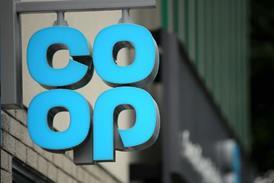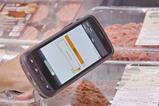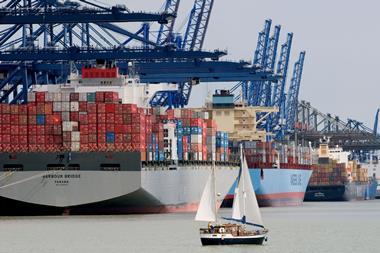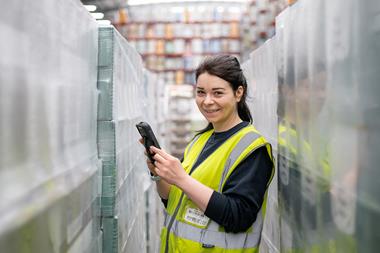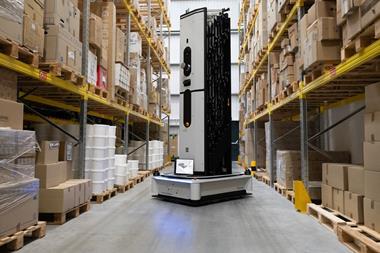Ten top retailers in the UK grocery sector report unknown shrinkage at disturbing levels, in some cases more than 50%. Could a multi-layered approach, incorporating technology and improved store design be the answer to loss prevention?
UK grocery retailers are still taking a battering after the pandemic. Global sourcing channels were hit hard, and many suppliers are still facing difficulties. Add to this the precarious state of the economy, with government hikes in interest rates to curb inflation, and the UK has faced a cost-of-living crisis not seen in decades.
Returning consumer footfall after Covid restrictions were lifted may have bolstered confidence in the ‘bricks and mortar’ side of grocery retail, but this is being knocked back again by shrinkage levels.
While the above may be viewed as a temporary challenge to retailers, the figures reported of some top retailers experiencing up to 50% unknown shrinkage, indicates an unprecedented rise and a real and present danger to the grocery sector.
Retail shrink in the grocer sector
Unknown shrinkage is loss that can’t be specifically identified, examples include internal and external theft, waste, human error and inefficient processes.
ECR Retail Loss, a leading UK forum for retailers, CPGs, and academics, recently conducted a benchmarking research session between loss prevention and finance leaders from 10 top retailers in the grocery sector, with a total turnover of over £190bn.
Professor Adrian Beck, one of the pre-eminent specialists in the field of retail loss prevention, led the research and the resulting session revealed that the participants had seen unknown losses (shrink) increase by 33% across all categories, compared to 2018 levels.
Professor Beck also advised that, for some retailers, there had been more than a 50% increase, and this had been across the board. These levels of loss within the grocery sector are causing deep concern and he stated that it was unusual to see such a large increase in a such a short period of time.
How to respond to rising shrink levels
The key issues facing retailers are how to respond to rising shrink levels and what loss prevention strategies and methods can be used to combat them.
Professor Beck reported that the positive news is that retailers are not ‘sitting on their hands’ but are taking a multi-layered approach, including increased use of technology, and improving store design.
Some retailers are installing barriers to control the flow of people. These may be a more visible deterrent to shoplifting, but leading companies in the provision of loss prevention technologies are developing ingenious and less intrusive means of detecting shrinkage, in all its guises.
Data from other representative bodies in the sector, which also highlight the rise in unknown shrinkage, indicate that a more holistic strategy is required.
This is a call to action for retailers and loss prevention solution providers to work more closely together. They need to embrace ‘a perfect circle’ strategy when it comes to unknown shrink, encompassing staff training and deployment, store design, inventory management and loss prevention technologies. Smarter deployment of the latter, can bring lasting, positive results.
Take store design and product display to deter shrinkage from theft. Sometimes it is the deceptively simple solutions that can add exceptional value and benefit to retailers and consumers when it comes to loss prevention.
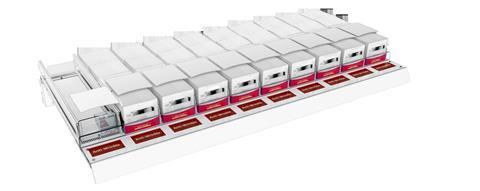
Loss prevention solutions for retailers
As an example, one of Australia’s largest retailers, with a turnover in excess of AU$40 bn and over 1,000 supermarkets in Asia-Pacific has deployed a theft deterrent system called ShrinkShelf™, designed by Checkpoint Systems, a leading, international provider of loss prevention solutions.
A revolutionary shelf management system, ShrinkShelf™ provides a tried and proven solution that maximises product capacity on-shelf, while minimising product shrinkage through stock sweep.
Comprising a series of adjustable dividers and anti-sweep hoods over the products, it incorporates a push-feed system to suit a full range of products. The pull-out shelf allows store staff to restock items quickly and easily manage stock expiry/rotation control.
Most important, the close shelf spacing typically increases selling space by 20-30%.
The retailer in question has rolled out ShrinkShelf™ in over 500 stores, initially focusing on products such as skin and sun care, ‘quit smoking’ and pain relief and oral care.
Deployment of this innovative shelf management system delivered a best sales uplift of 87%, with a typical shrinkage reduction of more than 35% across products displayed using it.
Shoplifters have to visit multiple stores to get the same amount of product and with the increased risk of being recognised and caught.
Achieveing improved inventory accuracy
Managing product on-shelf should go hand in hand with effective inventory control methods. Looking at best loss solutions to tackle unknown shrink due to anomalies in stock count, the latest inventory loss prevention solutions are now incorporating radio-frequency identification (RFID) technology.
Improved inventory accuracy can accelerate stock movement to improve cash flow and means goods can be handled faster to improve customer service and lead to increased sales. Being able to access real-time data that provides accurate inventory and stock reliability, delivers a win-win scenario for both the retailer and consumer.
RFID inventory tracking can monitor products that have RFID tags in real-time. Wireless communication is used to transmit data from a tag to a reader enabling inventory checks to be undertaken by personnel using hand-held readers. This is particularly useful for retailers who require frequent stock checks or have a high volume of inventory turnover, particularly in the grocery sector.

One of the potentially most beneficial developments is the use of RFID technology to help combat food waste in the grocery sector. This is another major contributor to unknown shrink.
The sector has been responsible for some 5% of the total amount of food thrown away annually, much due to expired perishable products.
Most grocery retailers have relied on time-intensive, visual inspections to monitor sell-by dates on perishable produce and to manage replenishment. The need has been for a 360-degree view of their inventory at any given time to manage sell-by dates.
An innovative solution developed for the grocery sector, RFreshID™, a fresh food solution from Checkpoint Systems, uses RFID technology to help stores manage and rotate stock efficiently through improving inventory visibility and enabling food with near or exceeded sell-by dates to be quickly identified.
Retailers can benefit immediately from this solution as the encoding process can start at source, enabling them to receive RFID-tagged products that can be quickly verified, providing high inventory accuracy.
In addition, RFreshID™’s scanning process enables store personnel to use an intuitive handheld device that quickly and accurately counts and locates specific items. This works with reporting software to deliver real-time data that includes insights on replenishment, expiration, markdown, waste reports, products to restock and order a well as items that are about to expire or have expired.
Completing the cycle from delivery to disposal, RFreshID™ waste process provides insights into the number of products that have expired and helps manage the fresh food waste process by automatically removing the product from inventory records.
The deployment of practical solutions such as the above examples, as elements of a full circle loss prevention strategy, provide effective, proven methods that can be used to combat shrinkage.
With unknown shrinkage reaching unprecedented levels, there is a clear call to action for retailers and loss prevention solution providers to combine their expertise. Find out more with CheckPoint - https://checkpointsystems.com/uk/




